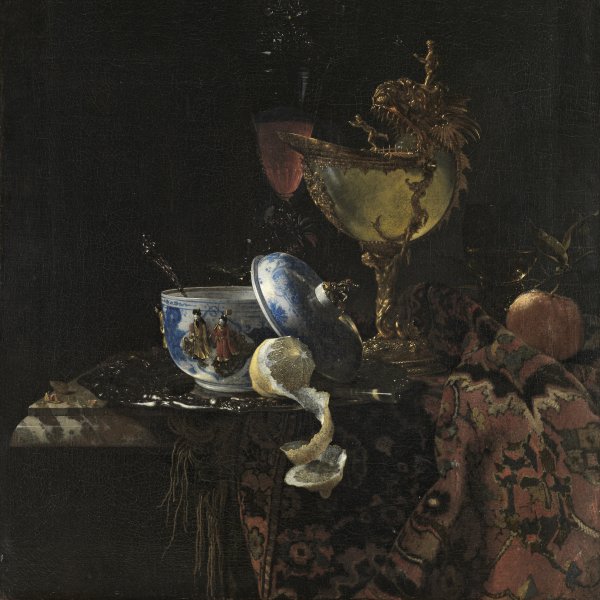Still Life with porcelain Bowl and Nautilus Cup
The still life, a pictorial representation of foodstuffs, objects or inanimate objects, was one of the artistic genres that became fully independent in the 17th century. The origins of the still life are to be found in earlier Netherlandish painting, among other sources. In early Netherlandish painting artists included additional elements in their religious compositions, depicting them in a realistic manner and with painstaking detail to the point where these paintings included small still lifes spontaneously inserted into their compositions. We also find precedents for this genre in 15th- and 16th-century illusionistic paintings, although 16th-century Italian art provides closer and more significant models, such as Caravaggio’s Basket of Fruit, dating to the very end of that century.
Although they can generally be interpreted as references to wellbeing or wealth, on occasions these still lifes include religious symbolism or references to the senses, the transient nature of life, sensuality or death. The rise of the still life as a pictorial genre has been related to the new social, economic and religious order that evolved in northern Europe from the end of the 16th century.
Willem Kalf composed this still life using a triangular structure whose base lies on the edge of the marble tabletop and its apex at the top of the long, narrow wine glass visible behind the nautilus shell. On this occasion the elements selected by Kalf include a small pocket watch with its key tied to a red ribbon, a glass of white wine with an ornamental foot, and a silver tray with a chased border on which he located a blue and white Chinese bowl of Ming porcelain. The fruit, comprising three peaches and an orange that retains some leaves and blossom, together with a half-peeled lemon, contrast with the pearly surface of the nautilus shell and the surface of the two wine glasses that frame the shell. This costly, luxurious group of objects and food is completed by a knife with an agate handle on the left, an oriental rug folded back on the right and grape pips scattered over the edge of the marble tabletop and the silver tray.
Many of the objects seen here are to be found in other works by Kalf. A canvas now in Strasbourg once again depicts the fruit, the glass of white wine and the agate knife, while another in the Metropolitan Museum of Art, New York, dated 1659 includes the oriental rug, the Chinese bowl and the tray with the glasses of red and white wine. Finally, a lost painting formerly in the Gemäldegalerie, Berlin, includes the watch, the silver tray and the Chinese bowl.
With regard to the symbolism that these objects may imply, it has been suggested that the watch on the left suggests the passing of time, while the remains of the fruit, the broken glass and the grape pips may refer to the transient, fleeting nature of life. Sam Segal analysed the significance of other elements within this composition such as the relationship between the lemon and the watch and its possible allusion to moderation.
Mar Borobia










